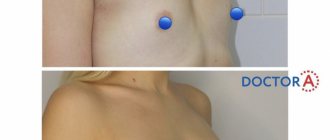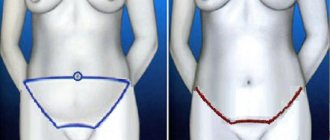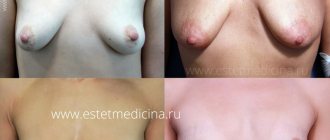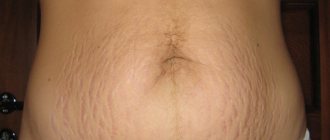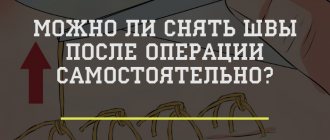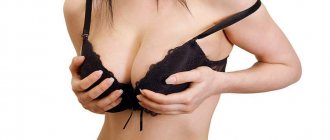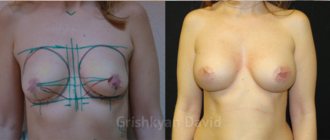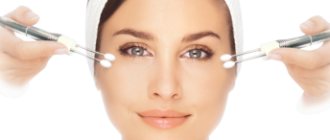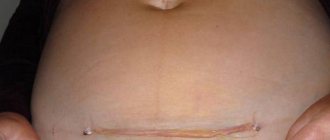Immersion of a dental implant into bone tissue is a surgical operation. During this procedure, the dentist cuts the soft tissue and removes the mucoperiosteal flap to gain access to the bone. After all installation procedures are completed, the gum is sutured to protect the implant installation area from infection. As a rule, sutures are removed after implantation no earlier than 7 days. Most often on the 10–14th day. These deadlines may vary in each individual case.
Timing for suture removal
How to remove stitches at home? What are the consequences of late or premature removal of sutures? When this manipulation is carried out later than the recommended period, the patient feels discomfort and tension at the suture site. Then tissue ingrowth and wound decay may occur, which will negatively affect the appearance of the scar. It is dangerous to remove stitches ahead of schedule: the edges of the wound may not have time to heal.
- after 12 days - with amputation;
- after 6 days - during surgical operations on the head;
- a week later - after a minor opening of the abdominal wall and 9-12 - during deep surgery;
- 10-14 days - for surgery in the chest area;
- 14 days - for surgical intervention performed on elderly people, weakened by diseases and infections, cancer patients (due to a decrease in the regenerative capabilities of the body);
- 14-20 days - after birth;
- 7-10 days - after cesarean section.
Why are sutures required after wisdom tooth removal?
Extraction of the third molar requires suturing. It is not always possible to save the patient from the procedure described above. Even when working with high-quality equipment, a competent dentist will encounter problems. The third molar is secured with the help of two roots, the removal of which requires making a few incisions, and then removing the tooth body from the gum. Sutures are also applied if there are clinical signs of gum inflammation. Swelling is considered a natural process for the body, due to damage to the gums during incisions. The suturing procedure is also a preventive measure, which reduces the risk of infectious pathological syndrome; pathogenic bacteria do not penetrate into the open wound. The smaller the size of the wound, the lower the likelihood of infection, the age the rate of regeneration. Regardless of the type of thread used, suturing takes a short period of time. Self-absorbable threads are a more preferable option; they do not need to be removed and re-injure the gums.
Is it possible to remove stitches yourself?
Removal of surgical threads is carried out regardless of the location of the sutured skin lesion. If possible, it is better to consult a doctor. You can remove the stitches from the wound yourself at home, if they are small and the scar is in normal condition. To carry out the manipulation, you need to be well prepared, arm yourself with tools that can be found in the pharmacy:
- surgical or nail scissors;
- tweezers;
- utensils for sterilizing instruments (saucepan);
- antiseptic for wounds (hydrogen peroxide, alcohol, iodine);
- bandage;
- cotton wool;
- sterile rubber gloves;
- patch.
When to remove stitches
Wound healing is the main indicator for suture removal, but the timing of this manipulation is determined individually in each case. During the consultation, the surgeon identifies the presence of local complications and evaluates the regenerative abilities of the tissues. The person’s age, general well-being, and the nature of the surgical intervention are also taken into account. Early removal of sutures can lead to inflammation, and if independent attempts are made to remove the threads, this can lead to infection of the wound.
Approximate timing for suture removal:
- from areas of the body that have an active blood supply (head/neck) - removal is carried out on the 4-6th
day; - from areas with a lower degree of regeneration (leg/foot) - removal is carried out later - approximately on the 9-12th
day; - from an infected wound, some of the sutures must be removed the next
day, since the healing process proceeds better using the open method; - With a clean wound, removal of sutures is permissible on the 5-7th
day.
It is necessary to take into account that for older people this manipulation is carried out after 14 days. The same applies to persons suffering from severe systemic diseases.
What thread are used to stitch the stitches?
Now there are quite a few types of threads that surgeons use; they can be classified both by brand and by characteristics. There are these types of threads:
- Absorbable. Able to be independently excreted from the body, incapable of rejection. These types of threads are used if the tissue is able to grow together quickly.
- Non-absorbable. Used for stitching tissues of internal organs or if long-term (permanent) stitching of tissues is necessary.
Absorbable threads are created from materials such as:
How long does it take for self-absorbable sutures to dissolve?
Typically, the suture material disintegrates after three weeks. The patient may notice how it has fallen out, or simply find that the wound remains clean, without threads. In more detail, catgut dissolves from ten to fourteen days, Vicryl - within thirty days, Dexon - a little longer.
It is impossible to name the exact period of resorption. Here everything depends not only on the characteristics of the material used, but also on the individual characteristics of the patient’s body. It also happens that the threads are still in place, but the doctor no longer sees the need for them. Then he removes them in the same way as non-absorbable ones.
Possible complications
The main complications during wound healing are pain, suppuration and insufficient sutures (dehiscence). Suppuration can develop due to the penetration of bacteria, fungi or viruses into the wound. Most often, infection is caused by bacteria. Therefore, after surgery, the surgeon often prescribes a course of antibiotics for prophylactic purposes. Postoperative suppuration requires identification of the pathogen and determination of its sensitivity to antibacterial agents. In addition to prescribing antibiotics, the wound may need to be opened and drained.
What to do if the seam comes apart?
Suture insufficiency is more often observed in elderly and debilitated patients. The most likely timing of complications is from 5 to 12 days after surgery. In such a situation, you should immediately seek medical help. The doctor will decide on further management of the wound: leave it open or re-suture the wound. In case of evisceration - penetration of an intestinal loop through a wound, emergency surgical intervention is required. This complication may occur due to bloating, severe coughing or vomiting.
What to do if the stitch hurts after surgery?
Pain in the suture area for a week after surgery can be considered normal. During the first few days, the surgeon may recommend taking a painkiller. Following the doctor’s recommendations will help reduce pain: limiting physical activity, wound care, wound hygiene. If the pain is intense or persists for a long time, you should consult a doctor, since pain may be a symptom of complications: inflammation, infection, formation of adhesions, hernia.
Recommendations for further gum care
In a broad sense, dental implantation is not completed after the sutures are removed. The postoperative wound heals completely only after three to four weeks. The artificial root is overgrown with bone tissue within several months. And only after the completion of the regeneration and osseointegration processes can we say that the implant is securely installed and can be loaded with a prosthetic structure.
After removing the sutures from the wound, you should follow the dentist's recommendations. In particular, it is important:
- after eating, rinse your mouth with disinfectant solutions;
- brush your teeth with care, without touching the implantation area;
- Until the wound is completely healed, do not neglect regular oral hygiene.
Compliance with the doctor’s prescriptions and recommendations helps the patient go through the first part of the rehabilitation period without complications.
The need for suturing in dentistry
Surgical intervention and, as a consequence, suturing are indicated for the following manipulations:
- Removal of wisdom teeth - third molars differ from the rest in the large size of the tooth crown and its root. Late eruption, the position of the “extreme” in the dentition very often leads to a violation of the physiological location of the tooth or even its impaction (partial or complete failure to erupt). In this regard, the procedure for removing a wisdom tooth is often accompanied by complications - extensive damage to the soft tissues of the oral cavity and alveolar process, ligaments, and blood vessels. To avoid this kind of consequences, dentists apply stitches to reduce the wound.
- Implantation - its implementation is always accompanied by the need for surgical intervention. A deep incision in the gum requires suturing.
- Maxillofacial operations - elimination of the consequences of traumatic injuries, congenital defects of the dentofacial apparatus.
- Removal of tumors of various etiologies - the integrity of the soft tissues of the oral cavity is damaged, often requiring layer-by-layer sutures.
How long do you need to walk with non-absorbable sutures?
If the doctor used non-absorbable suture material after removing a wisdom tooth, then seven to ten days later the patient must return for an appointment. The doctor will evaluate how the wound is healing and determine whether the suture material can be removed.
There is no need to be afraid of this procedure. It causes only minor discomfort. The dentist cuts the stitches one by one and, grasping one end of the thread with tweezers, carefully pulls it out. If the patient is afraid of pain, the doctor may use topical anesthesia.
Suture removal technique
Following the correct algorithm for removing sutures and maintaining sanitary conditions allows you not only to avoid infection of the wound, but also to speed up healing. Specialists explain the procedure to the patient before performing it and place him on the couch. The procedure has the following algorithm:
- Removing the protective bandage.
- Inspect the wound and determine the number of stitches to remove.
- Treating the wound with an antiseptic. It must be carried out 2 times to prevent infection, near the wound and inside.
- The suture knot is grabbed with tweezers and lifted.
- The thread that appears after pulling is cut.
- The suture is pulled back with tweezers and the knot is removed.
- Checking the integrity of the skin.
- Treating the wound with an antiseptic.
- The area is covered with a sterile napkin and then fixed with either a bandage or adhesive tape.
This procedure is performed in a hospital, but it is now quite common for postoperative sutures to be removed at home by a specialist.
Prevention of seam dehiscence
The postoperative wound is sutured with strong elastic threads. They do not diverge spontaneously. But if the patient violates the doctor’s recommendations, such a complication is possible. To prevent sutures from coming apart after implantation, you need to:
- do not eat for three hours after implant placement;
- for the first two days, apply cold compresses according to the regimen prescribed by the dentist;
- use rinses or baths prescribed by your doctor;
- do not chew on the side of the operation;
- refrain from spicy, hot, hard, sticky foods until the stitches are removed;
- give up physical activity.
Description of the process sequence
The process of removing sutures should be done in a well-lit place in order to clearly see the slightest nuances.
First, use tweezers to lift the first knot not very high. Then use scissors to cut off the base of the thread and begin to carefully pull it out, preventing outer pieces from getting into the fabric. This should be done until the last thread leaves the scar.
The knot should not be pulled through the skin: it will get stuck and cause bleeding. At the end of the procedure, which is relatively painless (except that there is slight discomfort and tingling during the process of pulling the thread), you should make sure that there are no fragments of sewing material left in the wound. To speed up the regeneration of the skin and prevent infection, the scar site should be treated with a weak composition of iodonate, and then apply a fixing bandage.
How to remove stitches from your head at home? It is extremely undesirable to do this yourself in hard-to-reach places, on the head, after a major operation, as this is fraught with a guaranteed infection. Do not wet or wash stitch cuts with soap. You should not try to remove surgical braces at home: doctors do this in a hospital setting with a special tool. If suddenly blood begins to ooze from the wound, you should stop the independent operation and urgently consult a doctor who will help you finish what you started. The appearance of the wound and its healing depend on the accuracy of the sutures and the timely removal of them. Therefore, it is advisable to have the stitches removed by a medical professional.
How does the deletion work?
Sutures that have been placed on the skin and mucous membranes are easy to remove, so their removal is most often entrusted to an experienced nurse. In other cases, the work is carried out by a surgeon, however, almost all medical specialists can remove the sutures.
The sutures are removed using small surgical scissors and tweezers. The nurse uses tweezers to grab one of the ends of the knot that the doctor made when suturing the wound, and “pulls” it in the direction opposite to the direction of suturing. In the area of the white segment (appears during tissue healing), the thread is crossed with scissors. At the end of the procedure, the removed threads are disposed of. In order to prevent the occurrence of infection and accelerate the regeneration of the integument, the site of the postoperative scar is treated with a weak solution of iodonate, after which a fixing bandage is applied.
You can ask all questions by calling the unified medical helpline +7 (495) 125-49-50. Operators will tell you the address of the nearest clinic and make an appointment with a specialist.
This article does not constitute medical advice and should not serve as a substitute for consultation with a physician.

